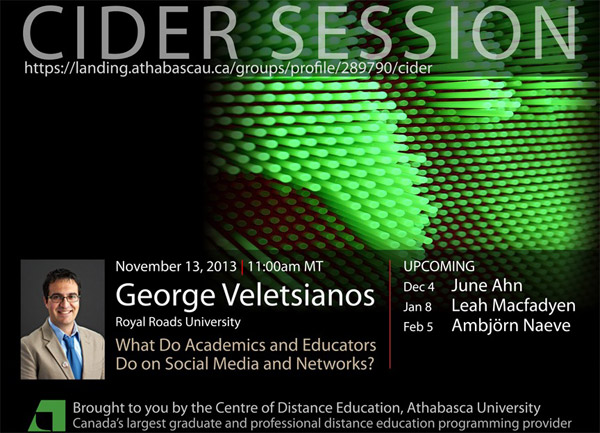In a recent interview, Noam Chomsky commented on the relationship between technology and education and one of his thoughts was the following:
As far as technology itself and education is concerned, technology is basically neutral. It’s like a hammer. The hammer doesn’t care whether you use it to build a house or whether on torture, using it to crush somebody’s skull, the hammer can do either.

Hammer – CC Photo by Birmingham Museum and Arts Gallery
I admire Noam Chomsky and his brilliance. I agree with this perspective, but this perspective does not paint the whole picture of what happens when we use technology in education. I’d like to unpack this just a little bit because there is a more accurate picture of technology use in education available to us. The broader picture I describe below helps us understand how technologies are used, why they succeed/fail, and how we can design better learning environments. From my observations of technology use in education, my research, my colleagues’ research, and my reading of the field’s research, here’s what I understand:
- Technologies can be as neutral as described above. For example, Twitter can be used as a broadcasting medium, a conversational medium, or even a 1-1 support tool. YouTube can replace the VCR used in class. Or, it can bring together people from different locations to discuss topics of common interest. In this sense, technologies are neutral in that they can serve various needs and can be used in different ways.
- Technologies themselves are rarely neutral. How can that be, you ask, when the bullet point above stated the opposite? Technology is not created in a vacuum. When technology is created, it is built with the developers’ worldviews, values, beliefs, and assumptions embedded into the technology and revealed through the activities supported and encouraged when individuals use the technology. For example, social networking sites (SNS) structure relationships in specific ways (e.g., followers, friends) and perceive privacy in different ways. Technologies hold particular views of the world, and in this way, they are not neutral. This is true for technologies that we repurpose for educational means (e.g., Twitter, YouTube, Ning, Elgg, Facebook, Flickr, and so on) as well as for technologies created specifically for educational purposes. For example, Learning Management Systems (LMS) espouse certain beliefs about the educational process and their default settings and suggestions may shape how they are used. Whn introduced in educational settings, said technologies tend to introduce tensions and conundrums (e.g., The way the LMS or SNS structured instructor-learner relationships vs. the way faculty envisioned instructor-learner relationships may be in conflict, leading to low uptake, rejection of the tool, etc).
- Technologies can be put to different uses, but not all uses are productive or effective. A hammer doesn’t care whether you use it to “build a house… or crush somebody’s skull,” but it will do a poor job if you try to use it in lieu of a screwdriver. The problem arises when entrepreneurs, designers, instructors, etc treating the hammer as a tool that can help them address all needs. A recent example of this is Udacity treating its product as a solution in search of a problem.
The ways that technology is used on the ground are complex and negotiated. In preparing instructors to use technology in education and designers to envision ways that technology can support/enhance education, we need to expose them to skills and mindsets that allow them to use tools in creative and inspirational ways. We also need to help them understand the assumptions and beliefs that technologies espouse and remain cognizant of the pressures and tensions that these may introduce.
* References pertaining to technology being not-neutral:
Whitworth, A., & Benson, A. (2010). Learning, Design, and Emergence: Two case studies of Moodle in distance education. In G. Veletsianos (Ed.), Emerging Technologies in Distance Education (pp. 195-213). Edmonton, AB: Athabasca University Press.
Hall, R. (2011). Revealing the transformatory moment of learning technology: the place of critical social theory. Research in Learning Technology, 19(3), 273-284.
Lane, L. (2009). Insidious pedagogy: How course management systems impact teaching. First Monday, 14(10).
Crook, C. (2012). The “ digital native ” in context: tensions associated with importing Web 2.0 practices into the school setting. Oxford Review of Education, 38(1), 63-80.


